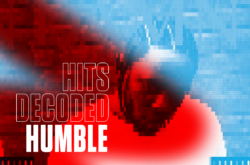19-year-old R&B sensation Khalid hasn’t let his age get in the way of achieving success, receiving multiple Grammy Award nominations including “Best New Artist” and “Best R&B Song” for his debut single, “Location.” The downtempo track rose to number 16 on the US Billboard Hot 100 chart and was later certified platinum. What made “Location” such a compelling song to so many listeners? Let’s take a look at three techniques Khalid uses that grab the listener’s attention.
1. A dramatic chord
There’s only one chord progression to “Location,” with the song repeating the pattern of VIM7 – V7 – i7 – VII (AM7 – G#7 – c#m7 – B) for its entire duration. The secret to the progression’s emotional weight lies in the second chord, V7, which is less common than its minor counterpart in popular music (although certainly not unheard of – Imagine Dragons’ “Believer” uses this chord as well). A major V chord alters the third from a diatonic B to a raised B#, which adds harmonic tension by introducing a leading tone to our minor key. The added 7th (F#) in the chord heightens this tension even further. These two pitches are what make the V7 chord sound so intense, and the following i7 chord so relieving – both the B# and F# of the V7 chord resolve by half step, to C# and E respectively, creating a strong sense of tension and release.
2. A sparse arrangement
While it may be tempting to layer dozens of tracks in an effort to beef up a song, the minimalism in “Location” demonstrates how a sparse arrangement can often be more effective in creating a captivating song. The opening’s spaced out synth plucks and percussion hits take full advantage of silence’s value as a musical device, similar to how streaks of color are emphasized if placed on a blank canvas. Even Khalid’s vocals that enter soon after follow a similar stop-and-go rhythm, keeping the listener yearning for each new line. Subtle additions and subtractions of percussive elements and atmospheric instruments distinguish the sections of the track – this maintains the sense of a singular flowing narrative while also creating musical interest.
3. A mix emphasizing depth
One last element that’s worth noting is how “Location” is mixed. The track establishes a clear sense of depth through the manipulation of both frequency content and dynamics. High frequencies seem to be attenuated in many elements of the song, such as the vocal shouts, pads, and synth plucks – this makes the percussive sounds that do have high frequency content sound crisp and close by contrast. Dynamics further reinforce this sense of depth, with the percussion and bass being significantly louder than many of the melodic voices, which serve more as distant textural elements. Prioritizing sounds in a mix can do wonders in carving out a song’s identity, and also prevents the ear fatigue that can be caused by a mix where all of the tracks are competing for space; when everything’s loud, nothing’s loud.
Want to create a song in Khalid’s style? On Splice Sounds, we offer samples by producers who’ve worked directly with the artist such as Ducko Mcfli and Hiko Momoji – check out their respective sample packs here and here.
And if you’re interested in learning what makes other Grammy-nominated tracks tick, check out all of our Grammy Hits Decoded posts here.
Explore royalty-free sounds from leading artists, producers, and sound designers:
January 23, 2018



